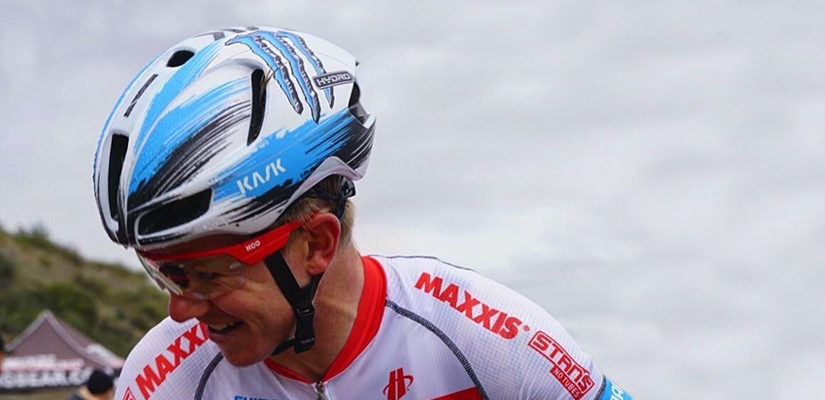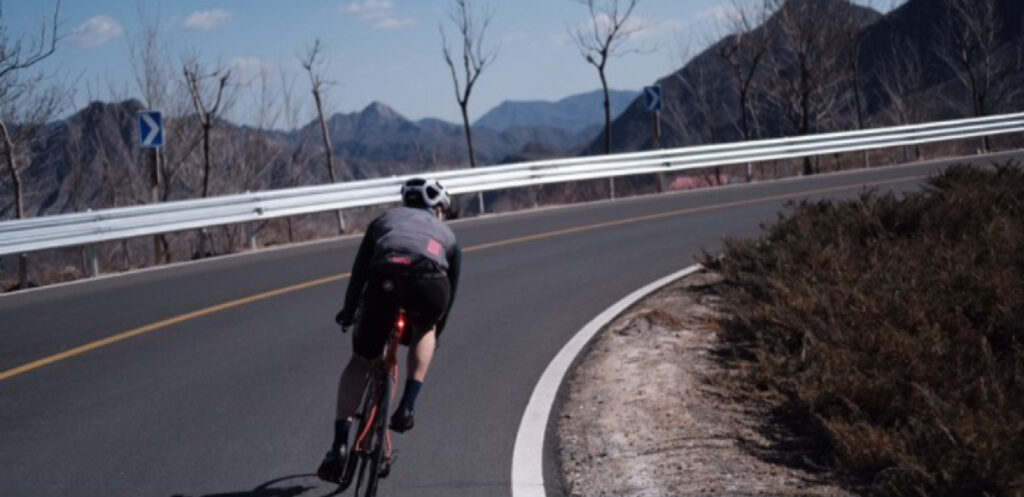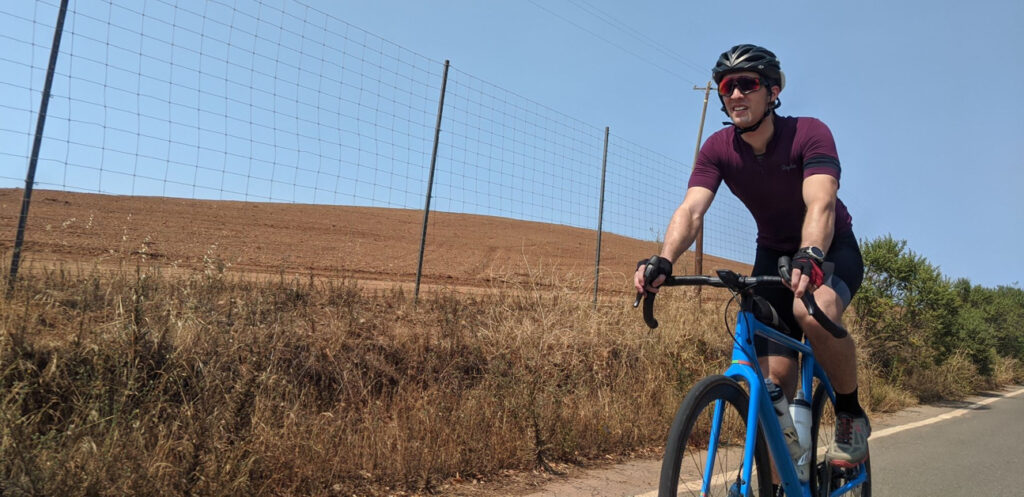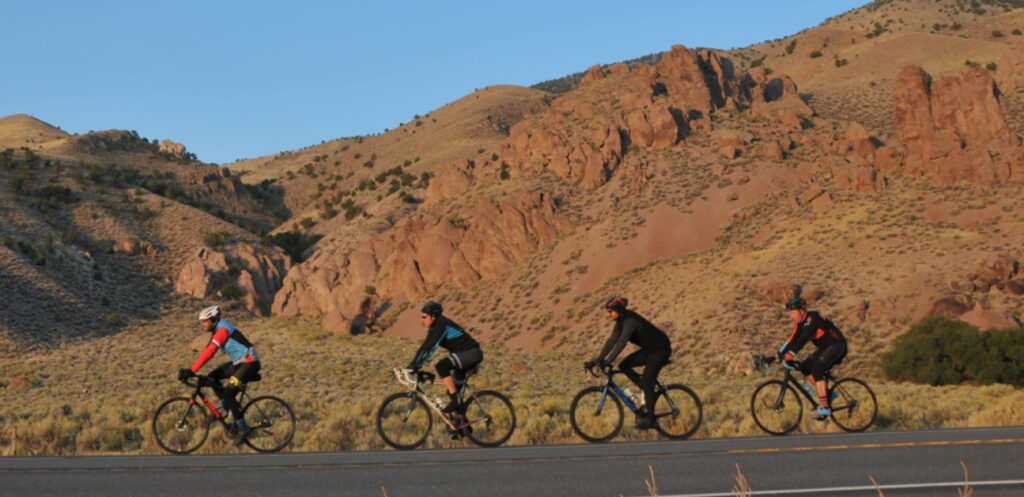Everesting Pro Tips with World Record Holder Keegan Swenson

On the slopes of Empire Pass, Utah, Stans Pivot’s and Monster Hydro’s Keegan Swenson set the world record for Everesting with a time of 7:40:05. Repeating the same 1.8-mile segment to amass 29,029 feet of elevation gain was no easy feat, and Keegan has some pro tips to share that can help you in your next endurance event.
Share your success story and tell us how TrainerRoad helped you reach your goals.
Key Takeaways
- Find a climb or event that you enjoy and suits your abilities.
- You have nailed your pacing if you feel like you can go a little bit harder at the finish.
- Consistent training pays off.
- Have low enough gears to make a big day of climbing easier.
- Plan out your support and nutrition.
Why Everesting?
Everesting rules are simple, yet the challenge is anything but easy. Repeat one climb to ascend 29,092 ft., the elevation of Mt. Everest’s summit. As to why he wanted to attempt breaking the Everesting world record, Keegan explained, “The last couple months, I’ve been pondering something to do. I was like; it’s been a while since I’ve done something big, kind of gnarly and hard. Without racing going on, I really have been chomping at the bit to do something to push myself.”
Helping with that push to do something big was Keegan’s housemate Ryan Standish. The same day that Keegan set the world record, Standish also completed the Everesting challenge to raise funds for BikeMS.
Everesting Route Selection
For the route, Keegan picked a favorite local climb in the Wasatch Mountains, Pine Canyon, which is part of Empire Pass. Riding the first section 29 times to gain the required elevation for Everesting, he selected the 1.8-mile section because it offered good bang for the buck. It was steep, consistent, and had no flat spots. At Keegan’s pace, it meant 12-14 minutes of work with 2-3 minutes of rest on the downhill. The work to rest ratio worked well. The short rest time wasn’t enough to fully recover as the fatigue accumulated, but it was manageable.
Adaptive Training
Get the right workout, every time with training that adapts to you.
Check Out TrainerRoadPlanning to go under eight hours meant that the descent needed to be quick. The chosen section stopped at the first switchback, which made for a fast descent because there wasn’t much braking required and was a massive time saver. Another factor in Keegan’s route was simply enjoyment. He said, “If you are going to do it that many times, you might as well enjoy it.”
Keegan’s Pro Tip: Find a climb you enjoy and suits your abilities.
This can apply to any challenge you want to attempt. Make sure it’s an event or climb that suits your strengths, and that makes you excited.
Everesting Pacing
Keegan based his pacing strategy on experience and training. During his fastest known time attempt on White Rim, his goal was 280w for five and a half hours. Unfortunately, that plan didn’t turn out as well as he’d hoped as he dealt with nutrition and hydration issues. Keegan decided that based on his experience and better logistical support, he could target 270-280w for Everesting.
“I was like, man, I’m not hurting enough. I can make myself hurt more. We need to go harder.”
Keegan Swenson
In addition to personal experience, Keegan let his training inform his pacing. In training, he was completing many hard endurance/low tempo rides, 4-5 hours long. As long as you are well trained, a rider can hold 60-70% for a long duration.

Pacing at that intensity is not easy. Keegan fought the mental battle and stuck to the pacing plan by only viewing the lap screen on his Wahoo Bolt and just focusing on hitting the numbers each lap. He knew he’d nailed the pacing during the last few laps, saying, “I was like, man, I’m not hurting enough. I can make myself hurt more. We need to go harder.”
Keegan’s Pro Tip: If you feel like you can go a bit harder by the end, you’ve nailed it.
Going harder at the start is a gamble. Focus on hitting your planned targets and go above them towards near the finish if you still have something in the tank.
Training for Everesting
Heading into the Everesting attempt, Keegan didn’t change his training or prepare specifically for it. He was training about 25 hours and 1200 TSS a week, which is normal during his race season. Using the postponed race season to address base fitness, Keegan spent most of his recent training with high-volume, low-intensity rides, albeit with a fair amount of Sweet Spot thrown in.

With stable and consistent training, he carried a high level of fitness into the record-breaking ride. If he would have done anything differently, Keegan said that he would have done a few longer rides, since it had been a while since he had ridden longer than five hours.
Keegan’s Pro Tip: Consistent training will help you raise your fitness level to a point where you know what you can do.
If your event is a long one, consistent, structured training will help raise your FTP and muscular endurance. This will help you keep the pedals turning all day.
Equipment for Everesting
Everesting required a bit of a change in equipment. Usually, Keegan uses 52-36 front chainrings, but switched to a compact 50-34 and ran an 11-32 cassette. The move to lower gearing helped keep his cadence and power where he wanted it. To measure power, he used a left-only, 4iiii power meter.
One the bike, he used Stan’s CB7 wheelset, with the smallest amount of Stan’s Race Sealant. He used one bottle cage and carried CO2 and Stan’s dart tool in case of a puncture. Keegan decided to use the Kask Protone helmet because, while it’s less aero, it is lighter and more ventilated.
Keegan’s Pro Tip: Get the right gearing—even if it means you have to ride your mountain bike.
Having low enough gears for a big day of climbing will pay off because you’ll be able to keep your cadence, and therefore power, in an optimal range. This can be a simple as changing your cassette.
Logistics and Nutrition
Critical to Keegan’s Everesting world record effort was detailed planning of logistics. His parents served as the support team and were located near the bottom of the climb. The effort required a large amount of food (6,680 calories). His goal was to get around 90 carbs per hour, so he prepared about 20 bottles with just enough water to drink on the climb. His drink of choice was a light mix of GU Roctane, with water or Monster Hydro at other times.
Keegan planned a diversity of food choices with various Gu gels, chews, and real food. As the day started, he stuck to real food, like fig newtons, but switched to gels later. For a prerace meal, Keegan went with large pancakes with peanut butter and chocolate chips.
Keegan’s Pro Tip: Find a good support crew and plan for a variety of foods.
Your tastes can change during a long event. Experiment during your training to train your GI system to handle food and find what works best for you.
“In total, I think it’s the hardest thing I’ve ever done on a bike if you’re combining the mental and physical side of it.”
Keegan Swenson
When asked how hard Everesting was, Keegan replied, “In total, I think it’s the hardest thing I’ve ever done on a bike if you’re combining the mental and physical side of it. I told my dad, ‘this is so dumb, why am I doing this?’ Then you just get into a rhythm.”
The right planning and training can help you get in that rhythm. Whether it is Everesting or another endurance challenge, learning more about planning and training check out TrainerRoad.
Tell us your story. Success isn’t always a race win. It can be life-changing health improvements, reaching a personal goal, or more.
For more cycling training knowledge, listen to Ask a Cycling Coach — the only podcast dedicated to making you a faster cyclist. New episodes are released weekly.


